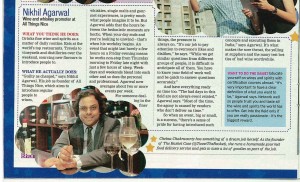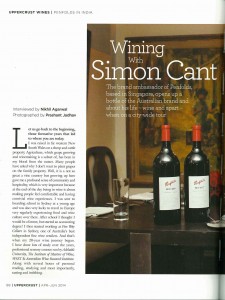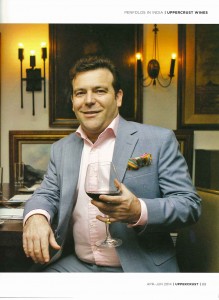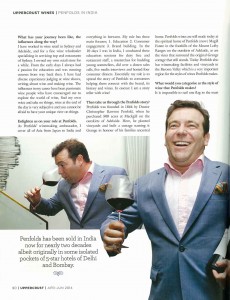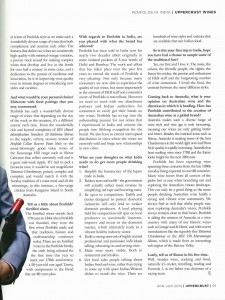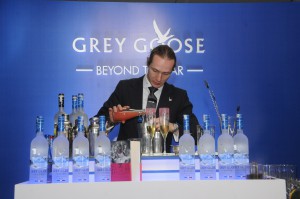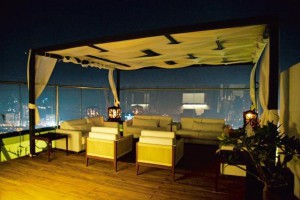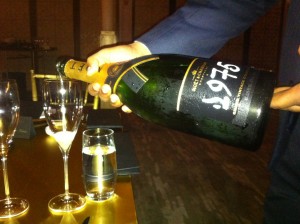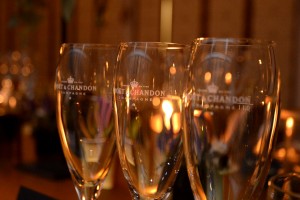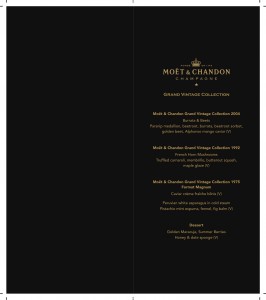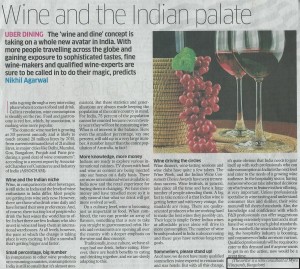Subspecies of Coffee Plant
2 major types:
Robusta: about 36% of global production
High caffeine content, can survive in a broader climatic range, strong coffee taste, produces thick “crema” in Espresso
Arabica: ca. 60% of global production
More expensive, slightly lower caffeine content, plant is a bit more delicate, more complex range in aroma, produces less “crema”.
Italian Mixtures are typically a mix of Robusta and Arabica, in varying parts. A small percentage of Robusta (10-25%) does by no means imply lesser quality, even though some experts may say so. On the contrary, it can cut off the edges and make for a more pleasant, “rounder” experience.
Provenances & Specialties
This list can of course not be exhaustive. There are so many coffee producing countries around the globe, so this could easily fill a book. Let me just mention a few that come to my mind immediately:
Ethiopia (Sidamo Province): Original habitat of the coffee plant. High genetic variety. Beans are quite small, complex in aroma, sometimes stunning fruity undertones. Mild and delicate, perfect for Espresso but not for Milk Coffees, as the aromas are too fragile.
Middle & South America (Peru, Colombia, Honduras, Caribbean, Brazil, Mexico etc.): Very diverse range of coffees. Some nuttiness in flavor is what they have in common. Brazil is mass production and cheapest. Peruvian Highland coffees can be very tender and delicate. Colombian on the other hand usually has a very strong nutty, spicy chocolate flavor. None of this can be generalized though, as many other factors (like roasting) play an at least equally important part.
The most highly praised (and priced) variety is Jamaican “Blue Mountain”, which costs easily 100US$++ per kg. Another highly praised variety is Hawaii Kona. Both of these very expensive coffees are usually not used for Espresso, but should better be prepared with a French Press (more about that later).
India: The “Monsooned Malabar” has become extremely popular among European Espresso lovers over the past few years. The raw beans are exposed to the rains and start fermenting, which creates complex chocolate aromas. It produces huge amounts of “crema” and is also very good for Cappuccino and Milk Coffee. The micro roaster where I get my coffee from told me that this is by far his best selling variety.
Others: In Africa, Kenya and other countries produce top quality coffees, in Asia, Indonesia is particularly noteworthy. Sulawesi and Bali coffees enjoy high praise.
Indonesia is also responsible for an abomination called “Kopi Luwak”. The most expensive coffee in the world, hyped excessively by the media over the past few years, and cherished by people who don’t know how to spend their money responsibly.
It is collected from the dung of Asian Palm Civets who have before eaten the whole coffee berry. The digestive enzymes of these mammals are responsible for fermentation processes in the bean, and this coffee can reach prices as high as 6.000 US$ per kg.
No surprise then, that these poor creatures are now caught in the wild, kept in cages under horrible circumstances and force fed coffee berries.
Needless to say that there are lots of fake Kopi Luwak on the market as well.
Roasting:
With darker roast, acidity is gradually removed and replaced by a more bitter and also sweeter note.
There are two important factors here: Temperature and Duration.
Mass Manufacturers will roast the beans for a short time at high temperatures (500 Celsius for 2 minutes). Small roasters and blenders (micro roasters) will go for 200 degrees at 15-18 minutes instead, producing a more full-bodied, less bitter product.
European Standard Filter Coffee will be roasted until golden brown, French roast would be slightly darker, while Italian (Espresso) roast will appear dark brown to almost black.
Grinding:
For a really good result, it is imperative to grind the beans just in time before preparing the coffee. Ready ground coffee will have lost all the volatile oils that make the aroma. An hour in the open is enough and it will all be gone.
Equally important is to choose a suitable grinder. The particles of the flour should ideally be all of the same size, and the grinder should not heat up during grinding, as to preserve all those precious volatile oils as well as possible. Also it should be finely adjustable in order to allow you to carefully choose the coarseness of the powder.
There are two different types of good coffee grinders: Cone based and disk based. There are no distinct advantages to either. Just choose a good one.
A common household mixer will not work, as it doesn’t grind the beans but rather chops them into different sized pieces.
Preparation:
For the connoisseur, there’s only three different ways to make coffee.
So, I will omit the obviously brain-dead ones like the German Filter Coffee method, for example.
Mokka (Greek/Turkish/Middle Asian Style):
This is the most ancient and original way to prepare coffee. The beans are ground very thin, and the flour is topped with hot water and plenty of sugar, then stirred, so that the flour sets on the bottom.
Strong, nice, and best served in small cups after a rich meal.
French Press:
The coffee should be ground quite coarsely for this one.
Hot water (90 Celsius) is being poured over the powder, and after several minutes a metal piston with a sieve is pushed down, containing the powder at the bottom of the jug.
This is the preferred method for very valuable coffees as it allows to discern a lot of different aromas and does not require the beans to be roasted too dark.
Served in standard tea cups (250ml) and suitable for all situations (morning, afternoon, with cakes and cookies).
Espresso:
This is the most difficult, yet for me the most rewarding way to prepare coffee.
Expensive equipment and a lot of technique are required, while the learning curve is steep.
The perfect Espresso is brewed at 90-95 degrees Celsius, at 9-10 bar pressure, within strictly 22-28 seconds for a portion of 25-30ml, using 7-8g coffee powder for each.
Anything that falls short of any of these parameters is not to be called “Espresso Coffee”.
The beans are roasted darker than for any other preparation style.
The grind has to be adjusted every day according to temperature and humidity in order to fulfill the above requirements.
Obviously, a dedicated Coffee Machine has to be used (for example an “Isomac Zaffiro”, which would be one of the cheapest at around 800 US$).
The perfect Espresso has “Crema” on top that resists a spoon of sugar for at least one second. It has no obvious bitter or acidic overtones and unfolds a silky smooth array of flavours in the mouth.
It is best enjoyed by itself in the afternoon (maybe with a cookie) or as the final digestive after a sumptuous meal in the evening. Sometimes the cup is being “cleaned” with a shot of whisky, grappa or brandy while still warm.
Cappuccino is a single or double espresso shot topped with foamed milk. A Caffè Latte (or Latte Macchiato) features even more milk, so the double shot will be topped up with approximately 200ml of foamed, hot milk.
This is traditionally strictly reserved for breakfast. Come noon, a normal or double Espresso Shot is the only viable option.
Originally confined to Italy, this method of coffee making has by now spread across the whole of Europe and is even slowly gaining momentum and gathering fans in the US (where some people are already starting to take perfectionism to the next level).
The larger portions of coffee, like from a French Press, you can of course (and many do) have a full slice of cake.
Same like with tea, actually. Also, I wouldn’t see any reason why for instance a samosa or a piece of onion pakora should be wrong.
The sugar thing is one of those things. Some self proclaimed experts say you mustn’t add anything. I say that’s BS.
I for example NEED sugar in my espresso, because else all I taste is bitterness. I would say this is highly individual and probably even determined genetically.
The “longer” coffees, like from the French Press, instead I enjoy most with a few drops(!) of milk, but without sugar.
Here’s more about the French Press: http://en.wikipedia.org/wiki/French_press
The French typically don’t drink “real” Espresso. They serve what is called “Schümli” in Switzerland (from “Schaum” = German for “Foam”).
It is basically an espresso brewed with more water and the powder ground on the coarse side.
The opposite would be the italian “doppio ristretto” which means, even less water is used than in a regular espresso, i.e. 20ml instead of 30. Doppio ristretto (“double restricted”) then is 40ml made from 15g coffee powder (2 portions).
Another way to turn an espresso into a full cup size drink would be the “Americano”, where a regular
double espresso (60 ml) would be topped up with hot water.
There’s yet another way to make a coffee similar to espresso, yet very different, and also sometimes falsely termed “espresso”, which is very popular in both France and Italy, and that’s the stovetop machine (often called “Bialetti” after its most prominent manufacturer).
The popularity comes from the low cost of such a “machine” and the comparatively nice results.
Check it out here: http://en.wikipedia.org/wiki/Moka_(coffee_pot)
The major disadvantage is that the water has to boil in order to produce the pressure, which means it will always exceed the optimum brewing temperature of 90 degrees.
By Nikhil Agarwal, Director & Sommelier – All Things Nice

